
Report by Kaspersky, 2019-2020
Technology is what is saving us from a complete change in the way of life in a world of a raging pandemic. It keeps the educational process going, relieves the shortage of human communication and helps us to live life as fully as possible given the isolation and social distancing. Many adults, and children too, have come to realize that the computer is not just a means of entertainment, but an important tool for education, communication and personal growth.
In this article, we look at changes that occurred in children’s behavior on the Web over the past year and the pandemic period. The report is based on statistics gathered by Kaspersky Safe Kids, a software solution that protects children from unwanted content on the Internet.
How we collect our statistics
Kaspersky Safe Kids scans the contents of a Web page the child is trying to access. If the site falls into one of fourteen undesirable categories, the module sends an alert to Kaspersky Security Network. No user’s personal information is transmitted and neither is privacy compromised.
We will note two important points:
- It is up to the parent to decide which content to block by tweaking the protective solution’s preferences. But anonymous statistics are collected for all the 14 categories.
- Data is harvested only from computers running Windows and macOS; no mobile statistics are provided in this report.
Website categorization
Kaspersky Safe Kids filters Web content according to the following categories:
- Internet communication
- Adult content
- Alcohol, tobacco, narcotics
- Violence
- Weapons, explosives, pyrotechnics
- Profanity
- Gambling, lotteries, sweepstakes
- Computer games
- E-tailers, banks, and payment systems
- Software, audio, video
- Anonymous access systems
- Job search
- Religion, religious associations
- News media
In this article, we will take a closer look at the most-visited categories for the past year. We have combined the less popular ones into a separate category, with their share of alerts marked as “Other”.
Picture of the world
Kaspersky Safe Kids alerts distribution by category in June 2019 through May 2020 (download)
Children around the world have spent increasingly more time watching videos and listening to music. Software, Audio, Video accounted for nearly forty percent of all Safe Kids alerts over the past year. It was followed by Internet Communications with 24.16 percent and Video Games with 15.98 percent. Online stores were fourth in popularity with 11 percent and News were fifth with 5.54 percent.
Interestingly, Job Search sites with 0.89 percent attracted far more interest from teenagers than Adult Content with 0.74 percent.
Kaspersky Safe Kids Windows and macOS alerts distribution by category in June 2019 through May 2020 (download)
Windows users spent more time watching videos, gaming and reading news than macOS users. The latter preferred chatting and spent much more time shopping online. That said, the adult content Windows users watched on the average more frequently during the year.
Kaspersky Safe Kids alerts distribution by category in June 2019 through May 2020 (download)
The pandemic forced kids to study at home, attending classes online, and we have seen how this affected their time at the computer. They less frequently visited gaming sites starting at the beginning of the year, even when compared with the September 2019 low of 16.75 percent: the figure fell to 13.26 percent in May. Meanwhile, Internet Communications showed a slight growth in April exceeding the October 2019 high by 0.85 p.p. to reach 27.51 percent.
Children visited online stores the most in the October of 2019. The category accounted for 16.93 percent of all alerts. The popularity of online shopping has steadily decreased since then, dropping by 7.57 p.p. to 9.3 percent by April, but May saw it rebound slightly. Adult Content grew somewhat (by about 0.5 p.p.) in winter, then returned to the summer 2019 levels (0.49 percent) in May.
The graph shows an abnormal drop in visits to Software, Audio, Video websites in October. The most likely cause can be considered to be the new macOS version, Catalina, released on October 7. Users who installed the update faced issues with streaming video on YouTube, Netflix, Amazon Prime and many other sites. The issue affected not just the Safari browser, but Google Chrome, Opera and Firefox as well. It was fixed in November, a fact that the statistics reflect.
Kaspersky Safe Kids alerts distribution for Software, Audio, Video on macOS in June 2019 through May 2020 (download)
Differences across regions, countries and months
Let us take a closer look at the most popular categories by region and by country to see if children’s preferences changed during the pandemic.
Software, audio, video
Software, Audio, Video has remained ahead of Internet Communications in recent years: kids have used Windows and macOS computers for watching videos and listening to music, but switched to mobile devices to chat. The category has retained its popularity even through the lockdown and online studies.
Kaspersky Safe Kids alerts distribution for Software, Audio, Video on Windows and macOS in June 2019 through May 2020 (download)
According to KSN statistics for the first half of 2020, Software, Audio, Video began to grow worldwide, reaching a peak of 42.47 percent on all platforms by May.
Kaspersky Safe Kids alerts distribution for Software, Audio, Video on Windows and macOS in June 2019 through May 2020 (download)
We explained the decrease in the category’s share on macOS in the fall and winter with issues stemming from an operating system update. As for the decline among Windows users around the same time, it was offset by increasing interest in other categories of sites, for instance, E-Commerce.
By the end of the reporting period, the share of Software, Audio, Video had increased among Windows users, whereas children using macOS began watching videos less frequently by May.
Kids in South Asia (India, Bangladesh) were most likely to spend their time watching videos and listening to music (46.16 percent). It was followed by Africa with 44.75 percent and the CIS with 43.83 percent.
Kaspersky Safe Kids alerts distribution for Software, Audio, Video by region in June 2019 through May 2020 (download)
The category had the lowest share in North America (36.20 percent) and Europe (35.94 percent). As we will see below, children in these regions gave preference not only to watching videos, but video games as well.
Kaspersky Safe Kids alerts distribution for Software, Audio, Video on Windows and macOS by region in June 2019 through May 2020 (download)
In Asia and South Asia, children who used macOS were more likely to consume audio and video content than those who used Windows. In other regions, the category’s Windows share was higher than macOS. In the CIS countries, children’s behavior was nearly identical on the two operating systems.
Interestingly, the distribution of countries where the share of Software, Audio, Video was the largest differs slightly from the regional breakdown.
Kaspersky Safe Kids alerts distribution for Software, Audio, Video by country in June 2019 through May 2020 (download)
Children in Belarus (50.59 percent), Japan (49.67 percent), Saudi Arabia (49.54 percent) and India (47.66 percent) favored websites that offered video and music over the past year. YouTube was the most popular video streaming service with kids anywhere in the world.
Online communication
Internet Communications predictably peaked at 27.45 percent in April 2020 as the process of switching schoolchildren to distance learning completed in most countries.
Kaspersky Safe Kids alerts distribution for Internet Communications on Windows and macOS in June 2019 through May 2020 (download)
We observe a pronounced growth from 17.87 percent in June 2019 to 36.63 percent in May 2020 on desktop computers and laptops running macOS. October’s peak was due to a reduction in the share of Software, Audio, Video category following the macOS update.
Kaspersky Safe Kids alerts distribution for Internet Communications on Windows and macOS in June 2019 through May 2020 (download)
Internet Communications accounted for an average of 32.76 percent, with 32.17 percent in Latin America and 30.54 percent in the CIS, and the lowest recorded shares being 15.50 percent in Europe and 16.58 percent in Oceania.
Kaspersky Safe Kids alerts distribution for Internet Communications by region in June 2019 through May 2020 (download)
Kaspersky Safe Kids alerts distribution for Internet Communications by country on the average in June 2019 through May 2020 (download)
The largest proportions of children using personal computers for internet communication were recorded in Egypt, Kenya, Mexico and Russia. The lowest rates were recorded in Germany, Australia, the UK and Canada.
Starting at the beginning of 2020, the most popular sites in the Internet Communications category were skype.com, hangouts.google.com, web.whatsapp.com, meet.google.com, facebook.com, twitter.com and mail.google.com.
Computer games
Despite the fact that the share of Video Games alerts showed a downward trend in the first half of 2020, the category ranked third among the most popular website topics.
Kaspersky Safe Kids alerts distribution for Video Games on Windows and macOS in June 2019 through May 2020 (download)
Kids spent more times playing video games on Windows than macOS desktop computers and laptops. This is due to the fact that most computer games are released for the Windows operating system. However, by the end of the reporting period, macOS users’ interest in games had grown.
Kaspersky Safe Kids alerts distribution for Video Games on Windows and macOS in June 2019 through May 2020 (download)
Kids all around the world started visiting gaming sites less frequently, though. This can be explained by added activity in the form of school lessons, which relocated into the home due to the pandemic. Interestingly, the share of Video Games began to decline among Windows users starting in the fall of 2019.
While North America, Europe and Oceania did not show increased activity in Internet Communications and Software, Audio, Video, these regions had the highest shares of Video Games activity.
Kaspersky Safe Kids alerts distribution for Video Games by region in June 2019 through May 2020 (download)
According to our statistics, the UK had the highest proportion of children interested in games with 23.94 percent, followed by the US with 21.61 percent and Australia with 20.94 percent. The most popular Video Games sites in the UK and the US were blizzard.com, roblox.com, epicgames.com, discordapp.com, ubi.com, origin.com, friv.com, curseforge.com, minecraftmods.com and crazygames.com. Australia’s most popular sites in the category were roblox.com and a variety of Minecraft message boards.
Kaspersky Safe Kids alerts distribution for Video Games by country in June 2019 through May 2020 (download)
E-Commerce
E-Commerce is another category where we observed increased activity throughout the year.
Kaspersky Safe Kids alerts distribution for E-Commerce in June 2019 through May 2020 (download)
The October 2019 peak, as we said earlier, was associated with a disruption in percentage shares across categories on all platforms due to a malfunction in the new macOS. But, in November and December, kids’ interest in online shopping was also higher than in the other months. Which is not surprising: November is the time of the Black Friday sales around the world, and December typically sees everyone busy picking Christmas and New Year’s presents.
Kaspersky Safe Kids alerts distribution for E-Commerce on Windows and macOS in June 2019 through May 2020 (download)
Children who used macOS spent much more hours looking at online shopping windows than their peers who used Windows.
Kaspersky Safe Kids alerts distribution for E-Commerce by region in June 2019 through May 2020 (download)
Children in Europe, North America and Oceania visited online stores and showed interest in shopping more frequently than others. The CIS, Asia and Latin America showed the lowest activity rates in the world.
Kaspersky Safe Kids alerts distribution for E-Commerce by country in June 2019 through May 2020 (download)
The leaders by share of visits to online stores were children in Germany (19.51 percent), the UAE (17.22 percent) and Canada (15.86 percent). The lowest figure was recorded in Kazakhstan (4.60 percent) and Egypt (5.18 percent).
The most visited sites in Germany were amazon.de, otto.de, ebay.com; in the UAE, amazon.ae, panemirates.com, amazon.com and luluhypermarket.com; and in Canada, amazon.ca, visions.ca and bestbuy.ca.
News
Not just adults, but kids, too, showed interest in news, especially in light of recent events. The number of children’s visits to news websites grew around the world as coverage of the pandemic began. The peak (7.26 percent) fell on March, when most children were switched to distance learning.
Kaspersky Safe Kids alerts distribution for News on Windows and macOS in June 2019 through May 2020 (download)
Windows users, in general, showed more interest in news than those who used macOS. However, in February, the figure for macOS (7.25 percent) was higher than that for Windows (6.75 percent).
Kaspersky Safe Kids alerts distribution for News on Windows and macOS in June 2019 through May 2020 (download)
Kaspersky Safe Kids alerts distribution for News by region in June 2019 through May 2020 (download)
The largest share of News among Safe Kids users was recorded in Europe (11.11 percent), where the most active news-reading countries were the UK (14.14 percent), Germany (12.75 percent), France (10.97 percent) and Italy (10.25 percent). The lowest rate was recorded in the CIS (3.17 percent) and Africa (3.96 percent).
Kaspersky Safe Kids alerts distribution for News by country in June 2019 through May 2020 (download)
Interest in news peaked in the UK and in Italy at in February. Think of the fact that the transition to distance learning in these two countries took place in late February, whereas Germany and France went through the transition in early March, and interest in news there peaked in March, too.
Adult content
Kids were interested in adult content to a lesser extent. According to the global statistics, the popularity of this category peaked in January 2020 (1.12 percent), followed by a decline to the annual average.
Kaspersky Safe Kids alerts distribution for Adult Content on Windows and macOS in June 2019 through May 2020 (download)
That said, macOS users showed greater interest in pornography than Windows users.
Kaspersky Safe Kids alerts distribution for Adult Content on Windows and macOS in June 2019 through May 2020 (download)
Though in 2019 Windows accounted for a higher percentage of alerts, the trend changed at the beginning of 2020.
Kaspersky Safe Kids alerts distribution for Adult Content by region in June 2019 through May 2020 (download)
The CIS and Europe had the largest share of users who showed interest in Adult Content: 1.07 percent and 0.83 percent, respectively. The lowest rates were recorded in the Arab world (0.18 percent) and Oceania (0.24 percent).
However, the distribution by country shows that children in Mexico had the highest interest in Adult Content: 1.72 percent.
Kaspersky Safe Kids alerts distribution for Adult Content by country in June 2019 through May 2020 (download)
They were followed by children in Russia (1.06 percent) and France (0.95 percent). Children in China were least likely to access Adult Content on desktop computers: 0.04 percent.
Summary
The world is witnessing an unprecedented demonstration of digital technology primarily helping children develop, rather than impede their development. Online education, and communication with friends and relatives are all made possible only through technology developed in recent decades, which have become not just a day-to-day assistant, but a lifeline in times when leaving home and making personal contact can pose a health threat.
Data for recent months shows that children who are staying at home with constant access to the computer primarily chat and watch videos. And those are not necessarily just entertaining videos: there might be educational content amid that stream of YouTube clips.
This year, we noticed an interesting trend: children who use different operating systems diverge in their online behaviors. Kids who use macOS spend more time in online stores, show slightly more interest in adult content, chat more online and less frequently visit gaming sites. Windows users show greater interest in games and news, and visit websites with video and audio content more frequently.
We have also learned that children, like adults, pay attention to the news when the situation in the world concerns them directly. So, in the month when various countries were expecting to switch to distance learning, kids started to follow the situation closer by going to news sites.
Today’s children, who start interacting with technology at an early age, find moving all of their day-to-day activities online much easier than adults, and they are better adapted to situations where going outside could be life-threatening. Adults tend to question certain online activity, such as communications, but in a world where it is the only safe means of social contact, comes the realization that there may be more to it!


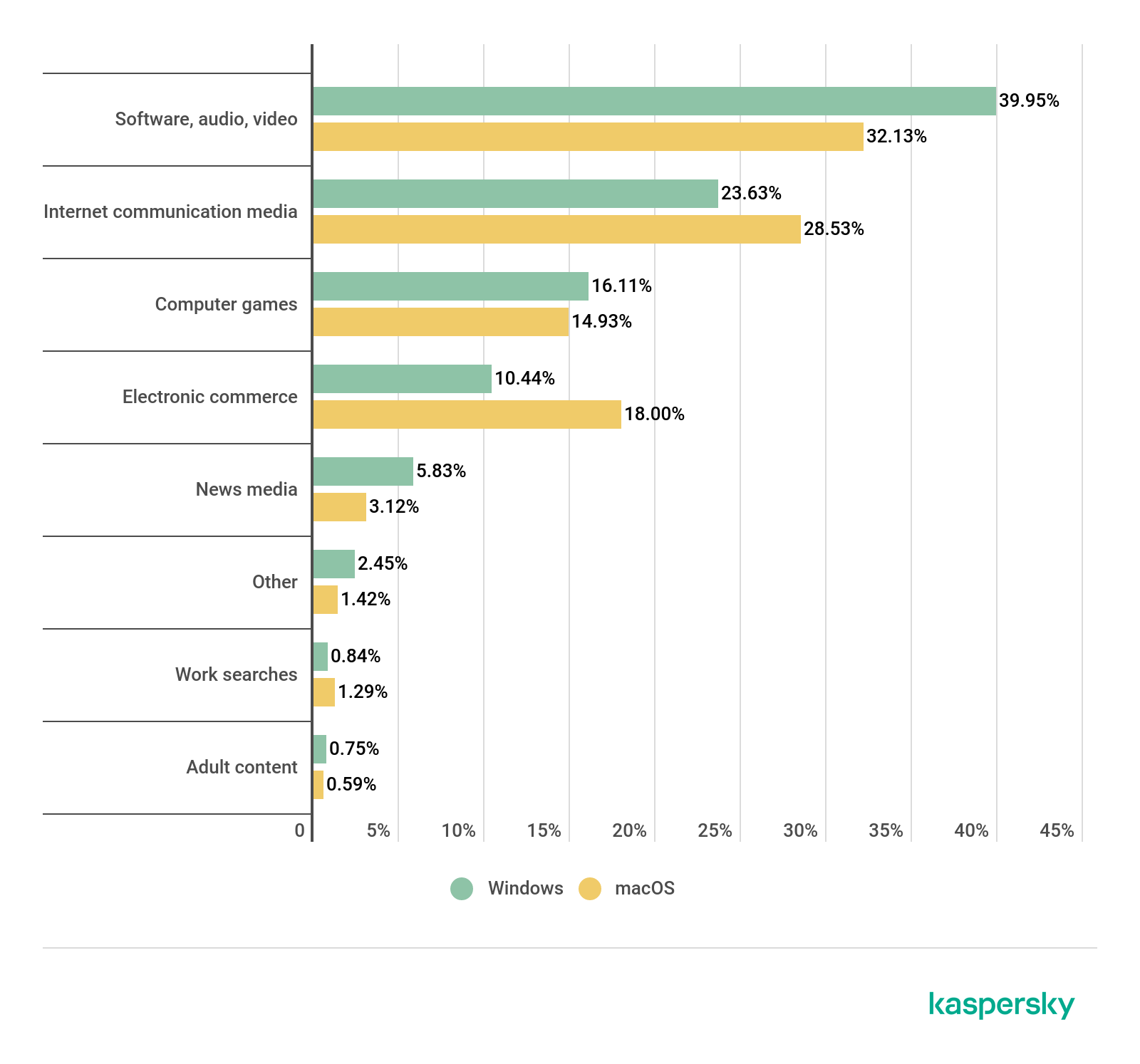
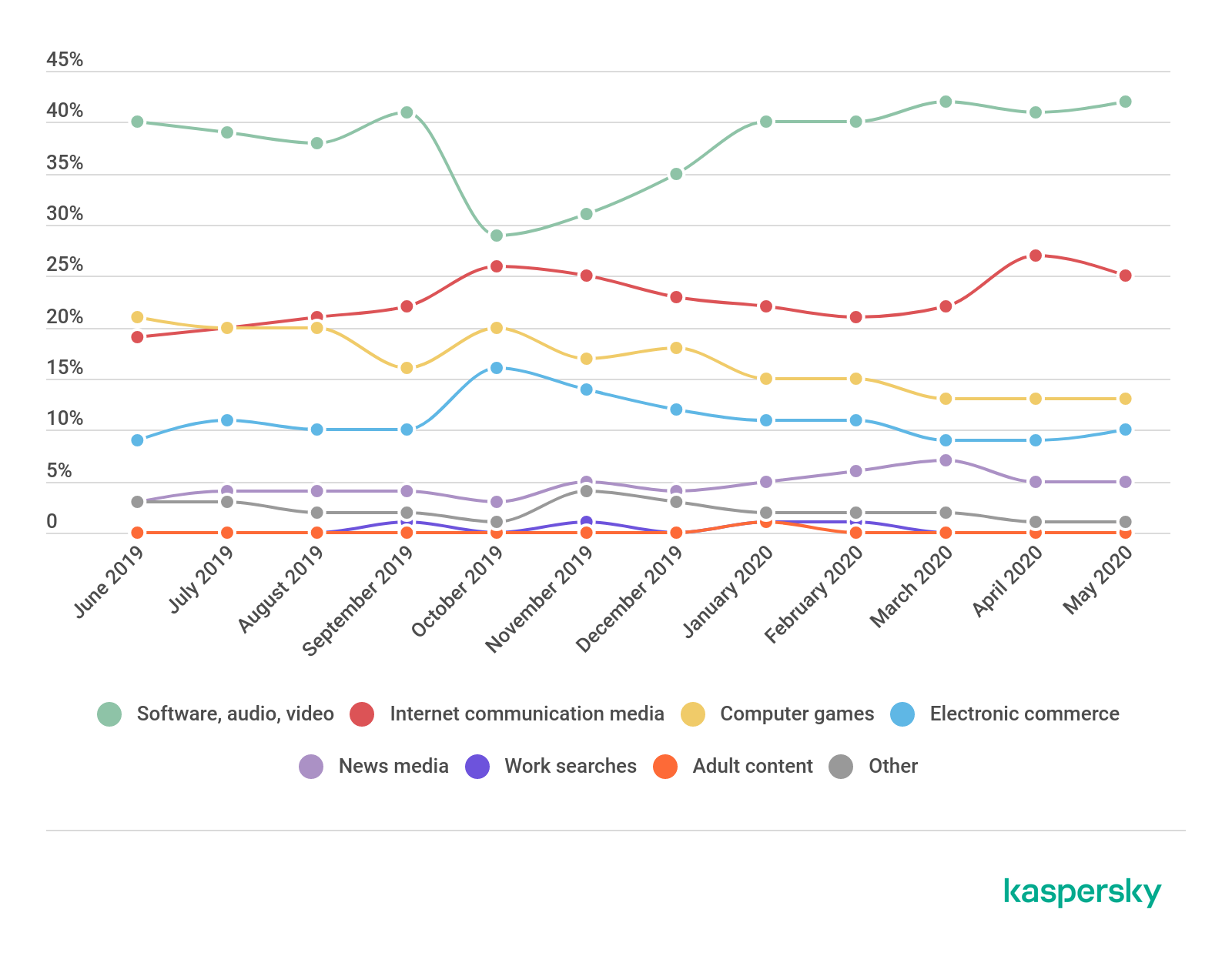






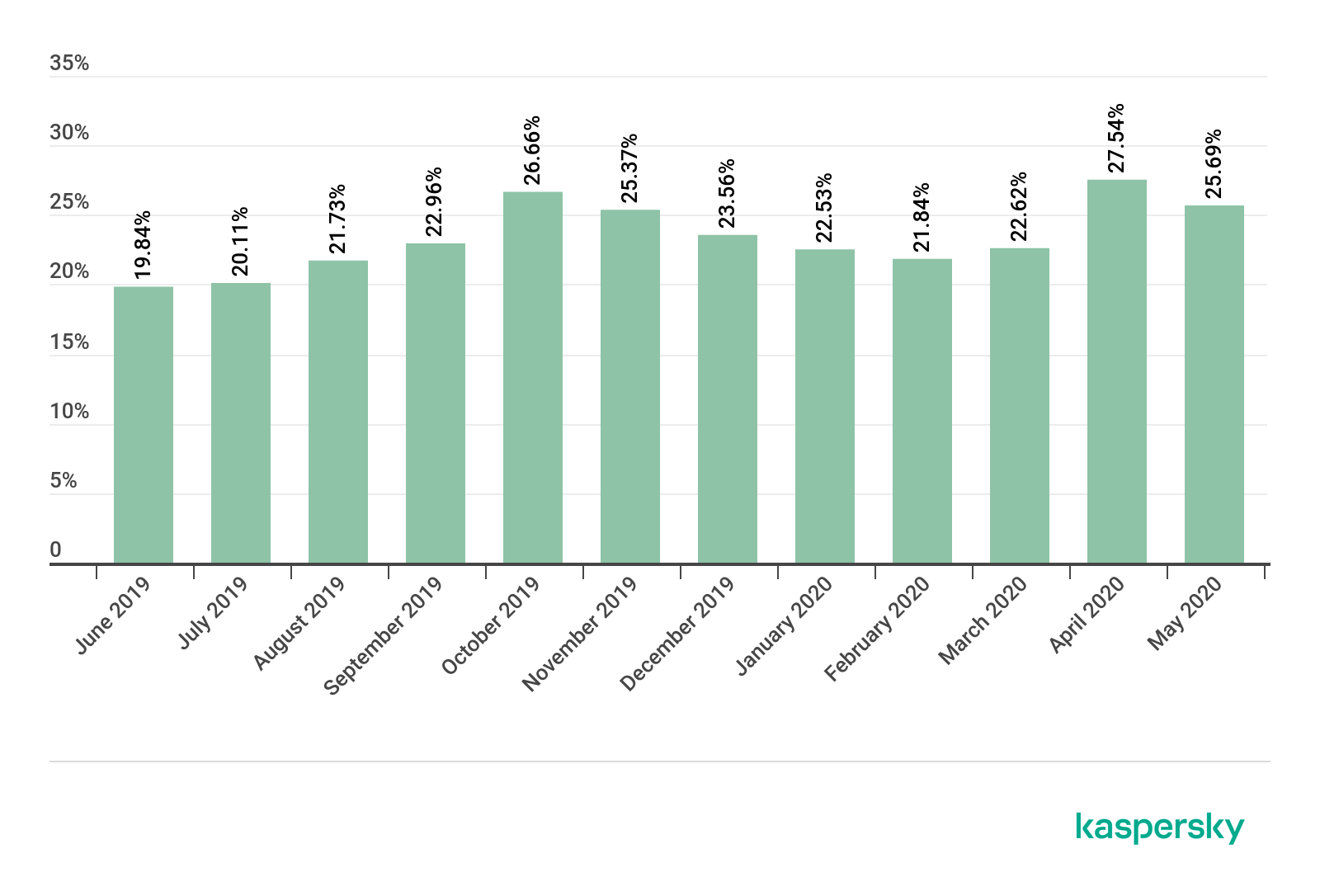





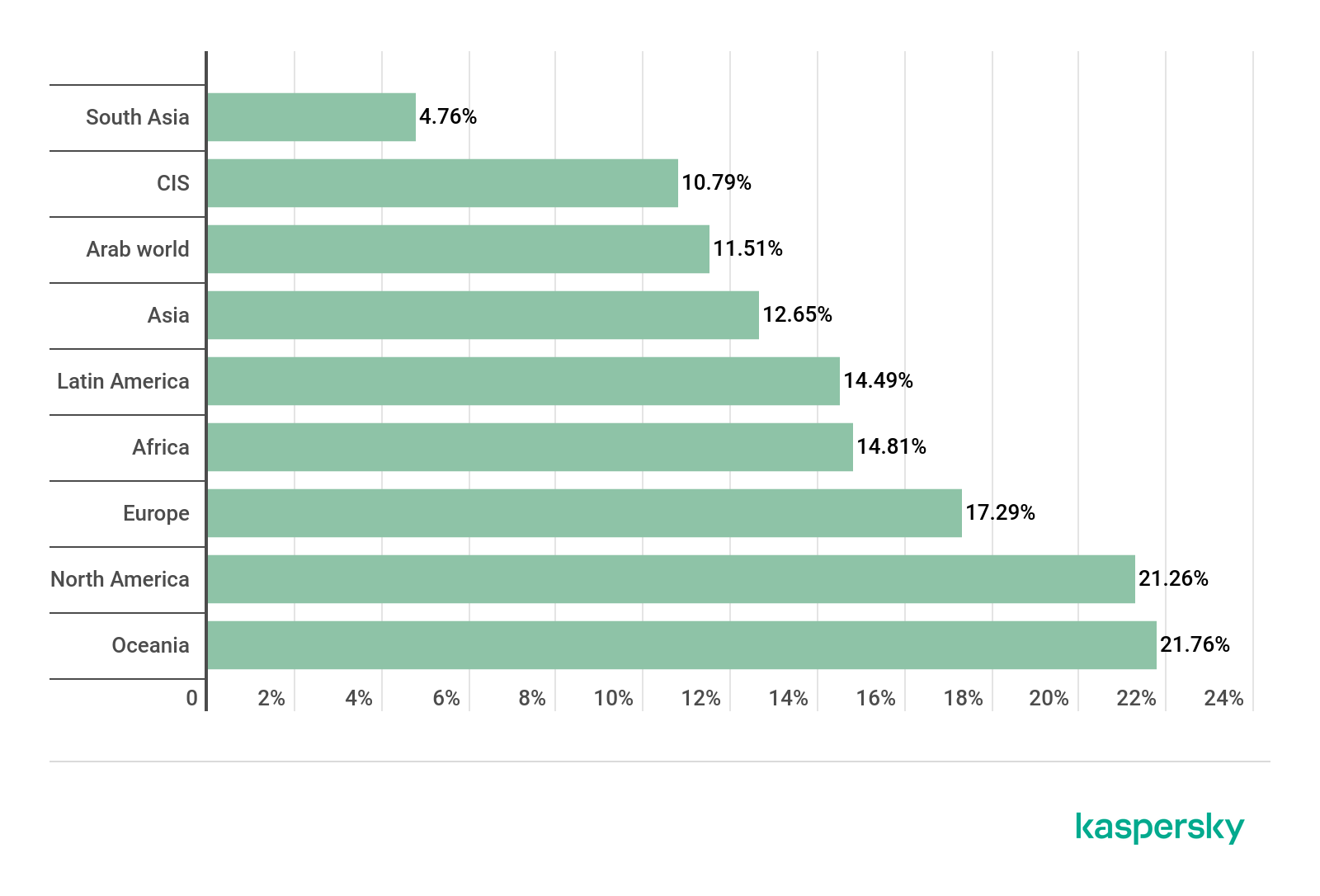







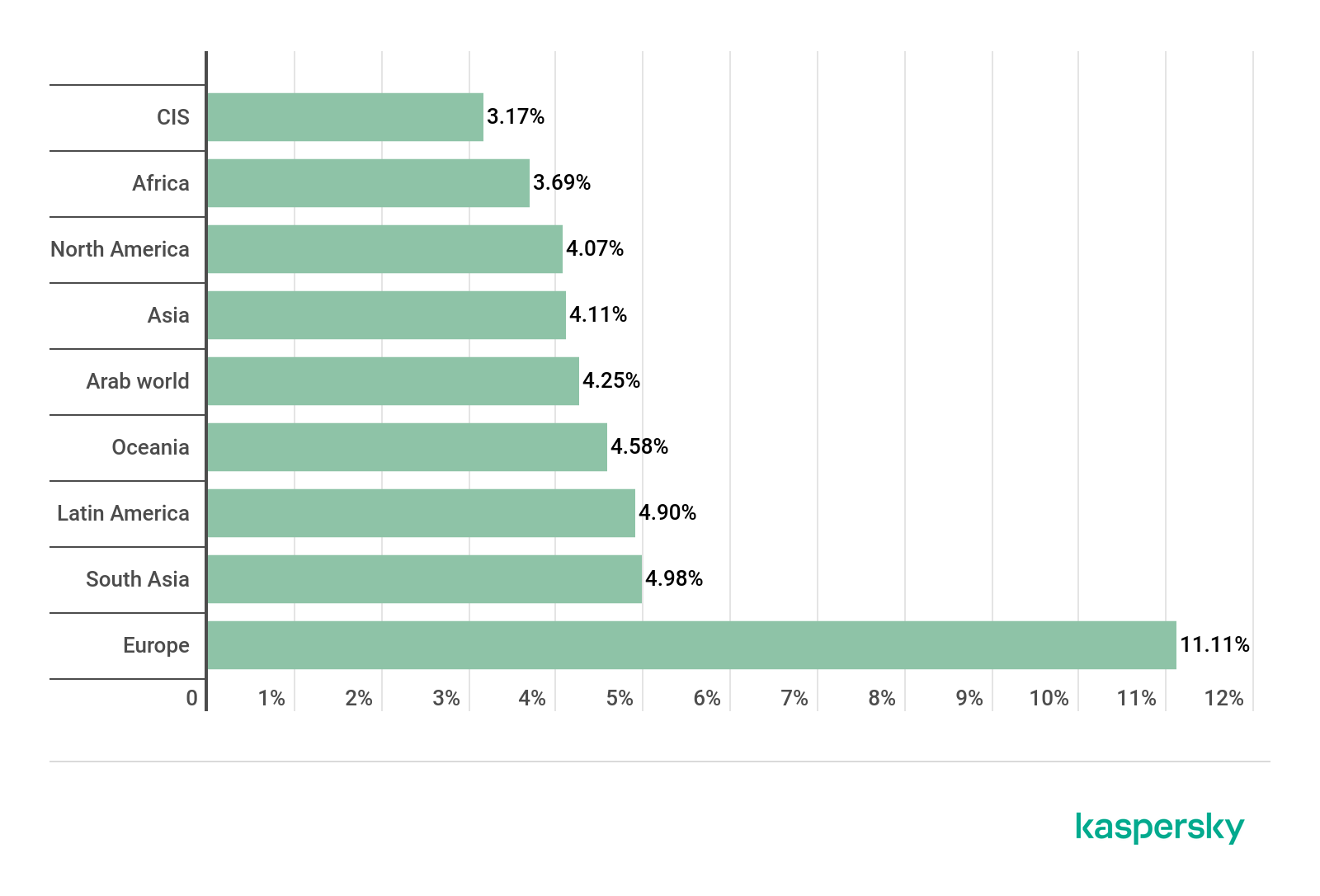

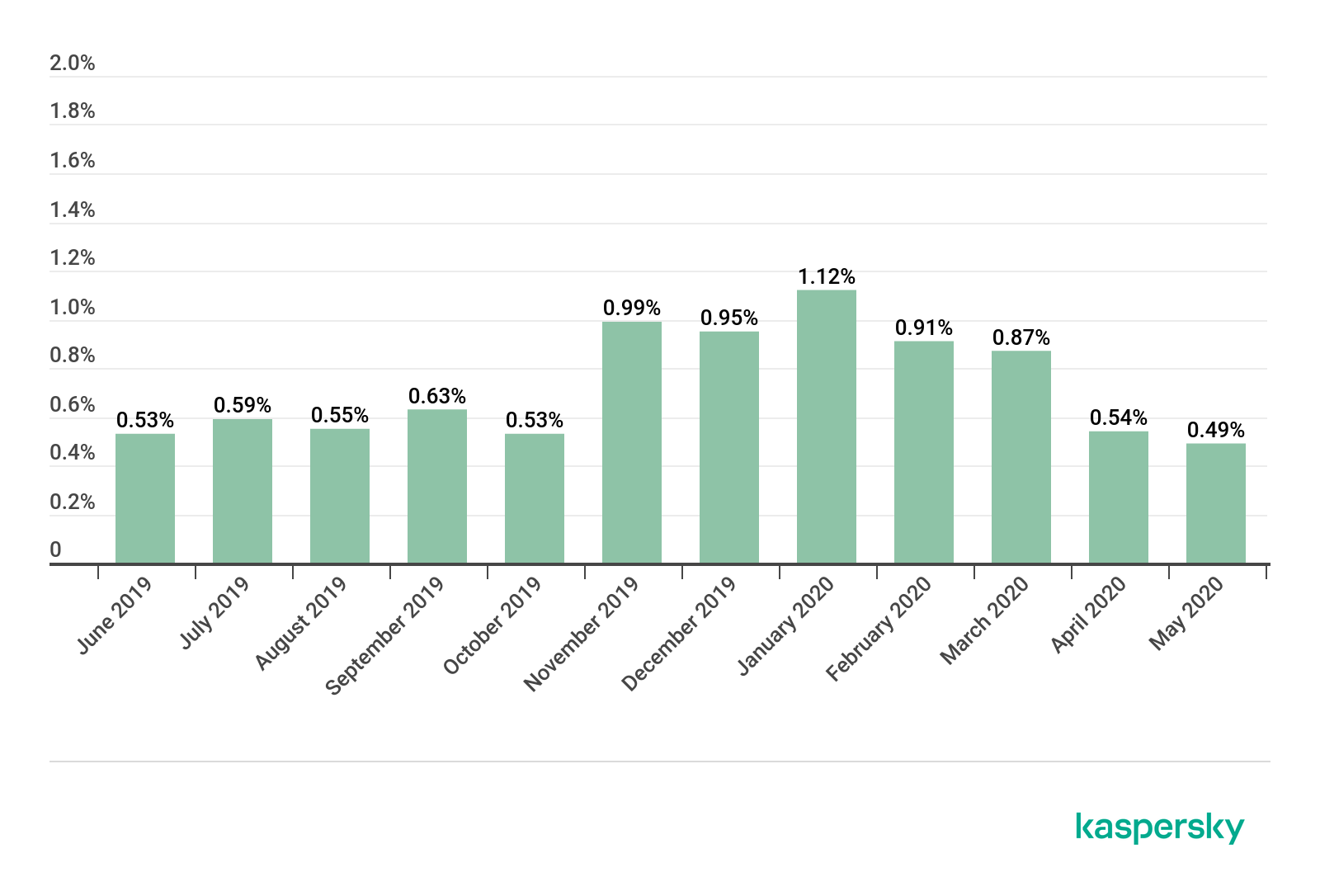
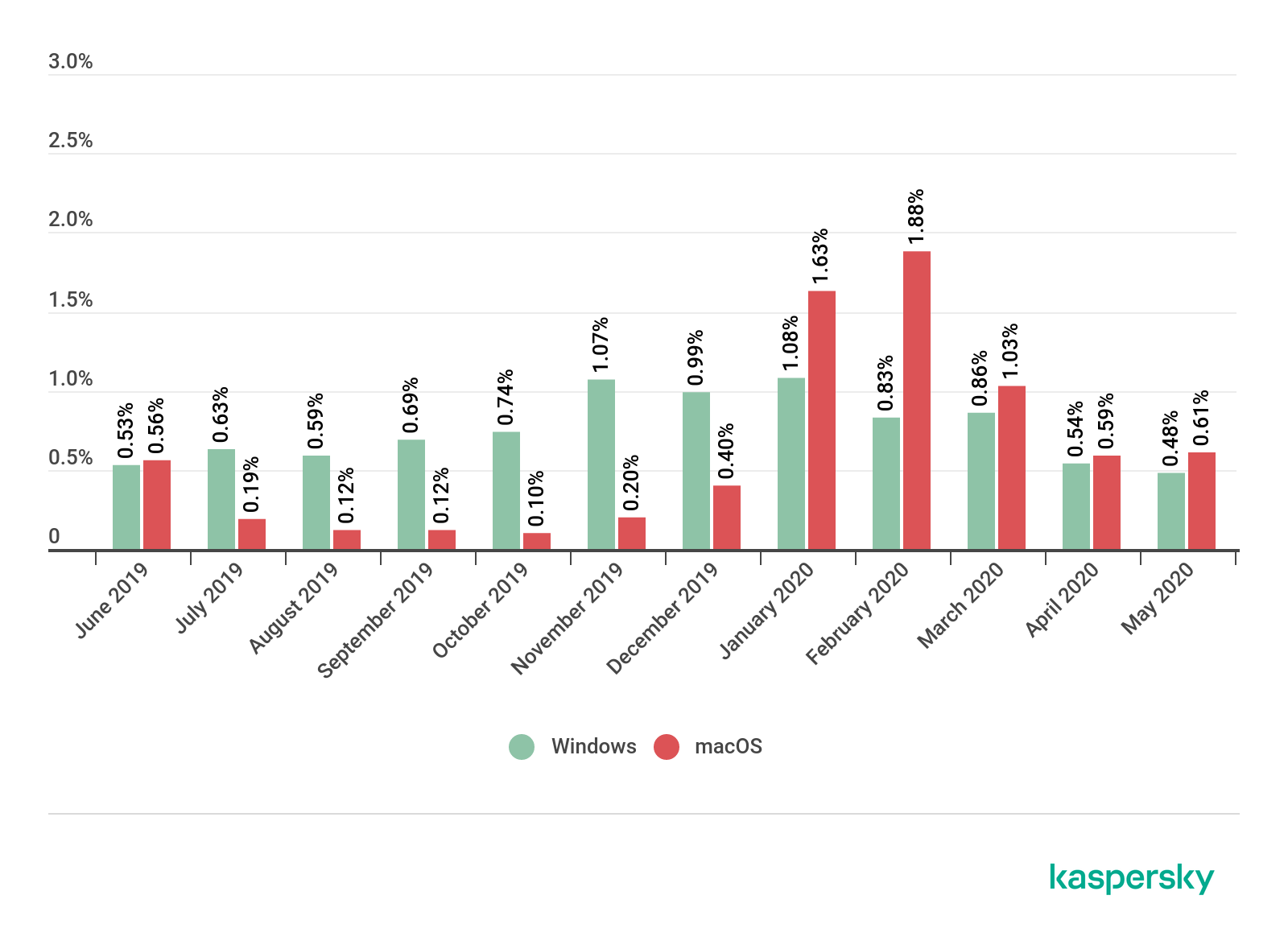




















Kids on the Web in 2020